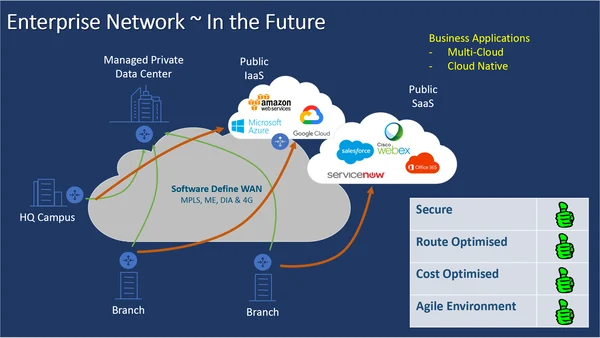
The Future of Enterprise Networking: Trends Businesses Should Watch in 2025
As enterprises expand their digital footprint, the demand for robust, secure, and scalable networks is growing exponentially. Traditional networking models, once sufficient, are struggling to cope with cloud adoption, remote work, and the surge of connected devices. In 2025, businesses that fail to adapt their networking strategies risk falling behind competitors. This article explores the most critical enterprise networking trends shaping the future, with insights that businesses in Kenya and beyond should consider for long-term growth.
1. Software-Defined Networking (SDN): The Era of Agile Networks
Software-Defined Networking (SDN) is rapidly replacing rigid, hardware-centric architectures. By centralizing network control through software, SDN allows enterprises to manage bandwidth, security policies, and traffic routing more dynamically.
Example: A financial institution in Nairobi adopting SDN can instantly reallocate bandwidth to support mobile banking traffic during peak hours, ensuring seamless customer experiences.
According to a Gartner report (2023), organizations using SDN experience up to 40% faster deployment of new services compared to those with legacy networks. This agility is becoming essential in industries where speed translates directly into competitive advantage.
2. 5G and Edge Computing: Redefining Connectivity
The rollout of 5G is not just about faster internet speeds—it’s about enabling entirely new possibilities. Paired with edge computing, 5G empowers businesses to process data closer to the source, reducing latency and improving real-time decision-making.
Example: In healthcare, IoT-enabled diagnostic tools connected through 5G and edge computing can deliver near-instant results, improving patient outcomes. For enterprises, this means faster supply chain monitoring, real-time video analytics, and better customer service delivery.
Research by IDC (2024) predicts that by 2027, 45% of enterprise data will be processed at the edge, signaling a massive shift away from traditional centralized models.
3. AI-Driven Networking: Smarter, Self-Healing Systems
Artificial Intelligence (AI) is increasingly being integrated into enterprise networking to enhance efficiency and reduce downtime. AI-driven networks can predict failures, optimize performance, and automate responses to potential threats.
Example: A retail chain in Kenya using AI-based monitoring can detect unusual spikes in traffic, flagging a possible cyberattack before it disrupts operations.
IEEE studies (2022) highlight that AI-assisted networking can cut network downtime by up to 60%, significantly improving productivity and customer trust.
4. Zero Trust Networking: Security at the Core
With cyber threats on the rise, businesses are adopting Zero Trust Networking—a model where no user or device is automatically trusted, regardless of whether they are inside or outside the corporate network.
Example: A logistics company ensures that even employees accessing the system from its Nairobi office must re-authenticate using multi-factor authentication before viewing sensitive shipment data.
This shift is vital as remote work and cloud adoption expand, making traditional perimeter-based security models obsolete.
5. Sustainability in Networking: Green IT
Sustainability is no longer an afterthought—it is becoming a strategic priority. Enterprises are increasingly adopting energy-efficient networking equipment and practices to reduce carbon footprints.
Example: Data centers are now using liquid cooling systems to cut power consumption, aligning with global efforts toward sustainable IT.
Reports by McKinsey (2023) show that green IT initiatives can reduce operational costs by up to 25% while enhancing corporate social responsibility.
Conclusion
Enterprise networking is entering an exciting new phase where agility, intelligence, and security are driving innovation. From SDN and 5G to AI-driven solutions and Zero Trust models, the future of networking is not just about connectivity—it’s about resilience, efficiency, and long-term competitiveness. For Kenyan enterprises, adopting these trends is not just optional but essential to remain relevant in a digital-first economy.
👉 At HyperCloud Technologies, we specialize in designing future-ready networking solutions that combine speed, security, and scalability. Get in touch with us to transform your network into a driver of growth.
References
1. Gartner. (2023). Market Guide for Software-Defined Networking.
2. IDC. (2024). Future of Enterprise Data: Edge Computing Trends.
3. IEEE. (2022). AI in Networking: Reducing Downtime and Enhancing Resilience.
4. McKinsey & Company. (2023). Sustainability in Digital Infrastructure.